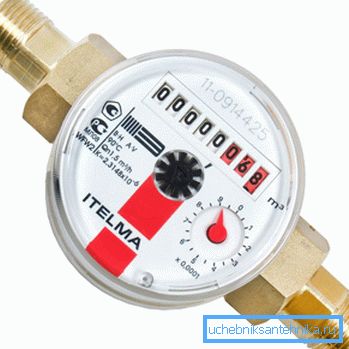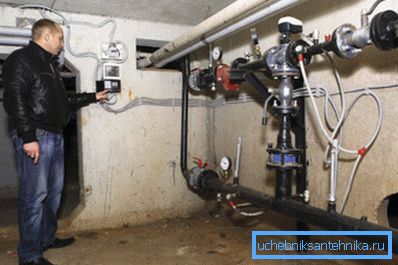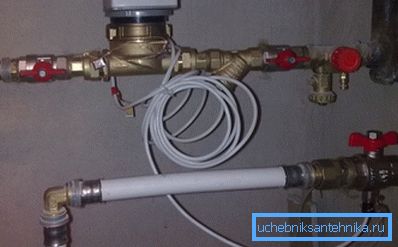Calculation of gcal for heating: measurement methods and
What is this unit - gigakaloriya? How is it related to the more usual kilowatt-hours of heat energy? What data is needed to calculate the heat gained in the room in gigcaloria? Finally, what formulas are used to calculate? Let's try to answer these questions.

What it is
We start with the next definition. Calorie is the amount of energy needed to heat 1 gram of water per degree Celsius at atmospheric pressure.
Since, compared to the cost of heat for heating the premises, one calorie is a ridiculously small amount, the calculations usually use a gigacalorie (Gcal) equal to one billion (10 ^ 9) calories.
The use of this particular value is stipulated by the Rules for Accounting for Heat Energy and Coolant issued by the Ministry of Fuel and Energy of the Russian Federation in 1995.
Information: the average standard consumption of heat in Russia is 0.0342 gigacalorie per square meter of the total area of housing per month. Standards for different regions differ depending on the climatic zone and are determined by local legislative bodies.
What is Gcal in heating in more familiar to us values?
- One gigacalorie is enough to heat 1000 tons of water one degree.
- It corresponds to 1162.2222 kilowatt-hours.

Why do you need it
Apartment buildings
Everything is very simple: gigacalories are used in calculations for heat. Knowing how much heat energy is left in the building, the consumer can be billed quite concretely. For comparison, when the central heating is operating without a meter, an invoice is issued for the area of the heated room.
The presence of a heat meter implies horizontal sequential or collector wiring of heating pipes: the flats of supply and return pipes are installed in the apartment; the configuration of the apartment building system is determined by the owner. This scheme is typical for new buildings and, among other things, allows flexible control of heat consumption, choosing between comfort and economy.

How is the adjustment?
- Throttling the heaters themselves. The throttle allows you to limit the patency of the radiator, reducing its temperature and, accordingly, the cost of heat.
- Installing a common thermostat on the return pipe. The coolant flow rate will be determined by the temperature in the room: it will increase when the air cools, and decrease when heated.
Private houses
The owner of the cottage is primarily interested in the price of a gigacalorie of heat obtained from various sources. We allow ourselves to give approximate values for the Novosibirsk region for tariffs and rates of 2013.
| Heat source | Cost of gigacalorie taking into account transport costs and efficiency of a heating installation, rubles |
| Natural gas | 501 |
| Coal | 520 |
| Pellets (granulated sawdust) | 1754 |
| Electricity | 4230 |
| Liquefied gas | 3225 |
| Diesel fuel | 3268 |
For comparison: the central heating at the time of collecting statistical data cost 1467 rubles per gigakaloriya.
Counters
What data is needed for heat accounting?
It is easy to guess:
- Coolant flow through heating devices.
- Its temperature at the entrance and exit from the corresponding section of the circuit.
Two types of meters are used to measure flow.
Impeller Counters
The counters intended for heating and DHW differ from those used on cold water only by the impeller material: it is more resistant to high temperatures.
The mechanism itself is the same:
- Coolant flow causes the impeller to rotate.
- It transmits rotation to the metering mechanism without direct interaction, by means of a permanent magnet.
Despite the simplicity of the design, the meters have a rather low trigger threshold and are well protected from data fraud: any attempt to brake the impeller with an external magnetic field rests on the presence of an antimagnetic screen mechanism.

Counters with differential recorder
The device of the second type of meters is based on the Bernoulli law, which states that the static pressure in a stream of liquid or gas is inversely proportional to its speed.
How to use this feature of hydrodynamics to calculate the flow of coolant? It is enough to block his way with a retaining washer. The pressure drop on the washer will be directly proportional to the flow velocity through it. By recording the pressure with a pair of sensors, it is easy to calculate the flow rate in real time.
Curiously: the meter device implies the presence of electronics in it. Most models of this type of meter not only provide raw data - water consumption and its temperature - but also calculates the actual use of heat. The control module of such devices has a port for connecting to a computer and can be reconfigured with its own hands under the changed calculation scheme.
And what if this is not about a closed heating circuit, but about an open system with the possibility of selecting DHW? How to record the flow of hot water?
The solution is obvious: in this case, retaining washers and pressure sensors are placed on both the supply and return pipes of the heating. The difference between the flow of coolant between the threads and will indicate the amount of hot water that has been used for households.

Formulas
How to calculate Gcal for heating in the presence of counters on both lines for an open (with hot water supply) or a closed (without hot water supply) system?
The calculation formula is Q = ((V1 * (T1-T)) - (V2 * (T2-T))) / 1000.
In it:
- Q is the required amount of thermal energy in gigacalories.
- V1 and V2 - coolant flow through the flow and return flow in tons.
Useful: counters, for obvious reasons, show consumption in cubic meters, not in tons. The actual mass of a cubic meter of hot process water is slightly different from one ton; but the difference on the background of meter errors is negligible, so you can safely use the meter readings in cubic meters.
- T1 is the temperature at the inlet to the circuit (flow).
- T2 - temperature at the outlet of the circuit (return).
- T is the temperature of cold water that feeds the route to compensate for losses. During the heating season, it is assumed to be +5 С, out of season - +15 С.
- The division by 1000 is necessary precisely in order to get the result not in mega-, but in gigacalories. Otherwise, we would have to recalculate water consumption in thousands of tons.
So, with a meter flow at a supply of 52 m3, the return flow is 44 m3, the flow temperatures are 95 C and the return flow is 70 C in the house ((52 * (95-5)) - (44 * (70-5))) / 1000 = 1.82 Gcal of heat.

Note: water consumption is charged separately. We consider only the consumption of heat energy.
What is the calculation instructions, if you have only one counter - on the pitch? Of course, it is implied that we are talking about a closed system (without DHW).
The calculation formula is Q = V * (T1-T) / 1000.
For example, with a water flow rate of 52 m3 and a coolant temperature of 95 ° C, 52 * (95-5) / 1000 = 4.68 gigacalories will remain in the flat in the apartment. As it is easy to see, such a counting system is much less beneficial to the consumer.

Conclusion
We hope that the information offered to the reader will help him save on heating. As always, additional thematic materials can be found in the attached video. Successes!